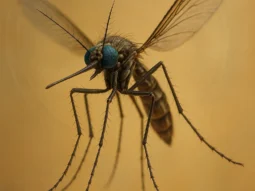
Spotting a German cockroach in your space is a jarring reminder to question the cleanliness of your surroundings. These pests are notorious for their presence in apartments, eateries, and hotels, signaling a red flag for health and sanitation.
Understanding the ins and outs of German cockroach infestations is crucial for your family's well-being. These critters aren't just unsightly; they're carriers of pathogens due to their excrement and shed skin. Stay informed on identification, habits, and control measures to keep your home safe and pest-free.
What are German Cockroaches?
When it comes to household pests, the German cockroach stands out as a pervasive nuisance. Tasked with recognizing these critters, you might wonder about their distinct features and the regions they infiltrate. Here's a closer look at the German cockroach and key details about its appearance and living preferences.
Physical Characteristics
German cockroaches are recognized by their light brown or tan coloration with two dark, parallel stripes running from the back of the head to the wings. Despite having wings, they are not adept fliers; these cockroaches prefer running to flying when disturbed or in search of food. An adult German cockroach measures between 1.1 to 1.6 cm in length, which enables them to hide in small crevices and cracks with ease.
Their nimble bodies are covered by a hard exoskeleton, which helps protect them from conventional squashing attempts—making them a sturdy adversary in your household. Nymphs or juvenile German cockroaches display similar markings but are darker, almost black in color, and lack wings.
Habitat and Distribution
Preferred habitat for German cockroaches includes warm, moist, and dark environments. This is why they're frequently found in kitchens and bathrooms—places with abundant food sources and humidity. These roaches thrive indoors, particularly in cluttered and unsanitary conditions, which provide ample hiding spots and breeding grounds.
German cockroaches are omnipresent in apartment buildings, restaurants, hotels, and other residential structures. Globally, their distribution spans various ecological zones—ranging from the tropical rainforests where moisture is abundant to the drier habitat of Chaparral regions with Mediterranean climates.
Dispersal has never been an issue for these roaches as they latch onto personal belongings, luggage, and commercial goods to expand their territories. Their origin is traced back to Southeast Asia, yet now they are ubiquitous, infiltrating virtually any accessible built environment everywhere from the Palearctic zone (Europe, Asia, northern Africa) to Central and South America.
Their reproductive habits contribute significantly to their widespread prevalence. German cockroaches are known for their high reproduction rate—female cockroaches can produce multiple egg capsules, each carrying 30-40 eggs. With such prolific breeding, controlling and managing their populations becomes a significant challenge.
The Dangers of German Cockroaches
Health Risks
When considering the health implications of pests, the German cockroach stands out due to its ability to spread various diseases. As you might not be aware, these pests are vectors for bacteria, parasites, and pathogens that are harmful to humans. The tiny spines on their legs and bodies can harbor germs picked up from decaying matter or sewage, which are then transferred to your food and surfaces. They don't have to bite you to be a danger; their mere presence is a threat.
| Diseases Spread by German Cockroaches | Sources of Contamination |
|---|---|
| Bacteria (33 types) | Decaying matter, sewage |
| Parasitic Worms (6 types) | Waste, unsanitary areas |
| Human Pathogens (7 types) | Infested areas |
Exposure to cockroach exuviae—shed skins and dead bodies—introduces chitin, an allergen that degrades and becomes airborne, potentially causing severe allergic reactions in sensitive individuals.
Allergies and Asthma
The correlation between German cockroaches and respiratory issues is alarming, especially for children. Exposure to cockroach allergens has been significantly associated with the exacerbation of asthma symptoms and the onset of asthma in children who were not previously diagnosed. Symptoms arising from these allergens include:
- Dermatitis
- Itching
- Swelling of the eyelids
- Runny nose
- Rashes
If you've experienced aggravated asthma attacks or observed an uptick in allergic reactions, there's a possibility German cockroaches are lurking in your environment.
Food Contamination
Arguably, one of the most direct impacts of German cockroach infestations is on food safety. These roaches are notorious for carrying bacteria salmonella and E. coli, known to cause food poisoning and gastrointestinal distress. They contaminate food and kitchen utensils simply by crawling over them, leaving a trail of bacteria and bringing illness to your doorstep.
German cockroaches’ droppings, which resemble black pepper, signal where they frequent and pose a contamination risk. Therefore, spotting these droppings in your kitchen or pantry areas should prompt immediate cleaning and treatment measures to mitigate the risk of food contamination.
Signs of a German Cockroach Infestation
Recognizing the signs of a German cockroach infestation is crucial for early detection and control. The presence of German cockroaches in your environment can be detrimental to health and safety. Here's what you should keep an eye out for:
Fecal Droppings and Smear Marks
One definitive indicator of a German cockroach problem is the appearance of fecal droppings. These droppings resemble ground pepper and can be a clear sign that cockroaches are living and feeding in the vicinity. Identifying roach droppings is essential, not only for detection but also for health reasons. Roach droppings can trigger asthma attacks and allergies, so it's important to remove them and clean the area promptly.
| Indicators | Description |
|---|---|
| Droppings | Small, dark, resemble ground pepper |
| Smear Marks | Dark spots or smears in corners of rooms |
Be vigilant for smear marks. Cockroaches leave behind dark stains that look like spots or smears typically found in room corners, door frames, and baseboards. These marks are fecal matter and must be cleaned thoroughly to prevent health risks.
Musty Odor
German cockroaches produce a characteristic Musty Odor that intensifies with the size of the infestation. This scent is not just unpleasant; it can make contaminated foods unpalatable. Detecting this odor can be a clear sign that a roach problem may exist in your space. Take note of this smell, as it can lead you to the areas most populated by the pests.
Egg Casings
These pesky insects lay eggs in casings known as oothecae. You might find these casings in areas that are typically out of reach like behind appliances or inside cabinets. The casings are long, brown, and purse-shaped, containing numerous eggs capable of exacerbating an infestation.
| Locations to Check for Egg Casings |
|---|
| Behind and under refrigerators |
| Under sinks |
| Inside cabinets and basements |
Spotting egg casings is a sign of a breeding population. Each casing you find could potentially mean dozens of new roaches in your space. Checking for these casings, especially in hidden areas, can prevent a small problem from becoming a full-blown infestation.
Prevention and Control Methods
Preventing and controlling German cockroaches involves a multifaceted approach that prioritizes cleanliness, proper food storage, elimination of water sources, and careful execution of exclusion techniques. By taking proactive steps, you can reduce the likelihood of an infestation taking hold in your home.
Sanitation and Cleaning
To hinder German cockroach infestations, sanitation can't be overlooked. Daily cleaning routines that eliminate food particles and spills are critical. This doesn't just mean wiping down surfaces – you need to be thorough:
- Promptly clean spills and remove crumbs
- Sweep or vacuum floors regularly to pick up food debris
- Ensure dishes are washed and no residue remains
- Maintain kitchen appliances to be free of food and grease
- Frequently run the garbage disposal to prevent food build-up
Reducing cockroach allergen levels and deterring population growth is closely linked to an environment's cleanliness. Clutter provides hiding spaces for cockroaches, so keeping your spaces tidy is non-negotiable. Remember, a clean home is your first defense against these persistent pests.
Proper Food Storage
Effective cockroach management involves minimizing their access to food. Storing household food items securely is essential:
- Seal all food containers; airtight is the optimal choice
- Do not leave any food, including pet food, out overnight; cockroaches are nocturnal and will feast in the dark
- Empty garbage bins each evening, using containers with tightly fitted lids to block access
By reducing sources of nutrition for German cockroaches, you create a less enticing environment, discouraging infestation.
Removing Water Sources
Alongside food, cockroaches need water to survive. In your quest to control these insects, you'll want to eliminate water sources:
- Fix any leaky pipes or faucets promptly
- Don't leave water standing in sinks or buckets
- Regularly check for moisture under refrigerators, dishwashers, and other appliances
By cutting off their water supply, you're adding an additional layer of prevention that makes your home less hospitable to cockroaches.
Exclusion Techniques
Finally, it's crucial to implement exclusion techniques to prevent cockroaches from entering in the first place:
- Seal cracks and crevices around doors, windows, and where utility pipes penetrate walls
- Use door sweeps on exterior doors
- Caulk holes in walls, particularly in areas prone to moisture like kitchens and bathrooms
Adopting these methods creates a barrier that makes it difficult for German cockroaches to gain entry to your home. Remember, even the smallest of gaps can be a gateway for these pests. Stay vigilant and maintain these barriers to protect your space.
Professional German Cockroach Extermination
When to Call a Professional
Identifying a German cockroach infestation often requires a keen eye and knowledge of their behaviors. You might need professional extermination services when:
- Persistent visibility of the cockroaches, despite your efforts in sanitation and use of over-the-counter products.
- You find egg cases or a high number of nymphs, signaling a breeding population.
- The presence of these pests leads to potential health risks, such as allergies or asthma.
- DIY methods fail to control or reduce the infestation.
- There's a neighborhood infestation, raising the chances of reinfestation through shared walls or spaces.
Professional exterminators bring expertise, effective treatments, and relief when it seems impossible to combat these resilient pests on your own.
Common Extermination Methods
Professionals use a variety of methods tailored to your unique infestation. These methods include:
- Inspection: A thorough examination to pinpoint infestation hotspots.
- Non-repellent Insecticides: These encourage cockroaches to traverse treated areas, leading to more effective population control.
- Baiting: A strategic approach using baits to target the population without excessive use of sprays.
- Insect Growth Regulators (IGRs): Chemicals that interfere with the roach's lifecycle, preventing reproduction.
- Sealing Entry Points: Professionals will often help seal up the crevices and openings that allow these pests into your home.
The combination of these methods ensures a comprehensive attack on the infestation intended to not just control but eradicate the German cockroach population in your home.
Follow-up and Monitoring
After initial treatment, follow-up and monitoring are crucial for long-term control. You can expect:
- Regular Inspections: To ensure treatments are effective and to catch new activity early.
- Retreatments: Conducted every 2 to 4 weeks until no signs of infestation remain.
- Monitoring: Using sticky traps and visual inspections, professionals will track progress.
- Preventative Measures: Recommendations for ongoing sanitation and exclusion efforts to prevent future infestations.
Successful extermination typically requires a multi-faceted approach, and consistent follow-ups are a cornerstone of effective pest control. Keep an eye out for any signs of a resurgence, and don't hesitate to inform your pest control provider at the earliest sign of trouble.
Conclusion
Tackling German cockroaches effectively hinges on your ability to recognize the signs and take swift action. Remember that keeping your space clean and food secure is your first line of defense. But when these persistent pests push past your barriers it's time to call in the professionals. They'll employ proven extermination techniques ensuring your home becomes roach-free. Post-treatment vigilance with follow-up checks will help keep it that way. Don't let these unwelcome guests put your health and comfort at risk—stay informed stay proactive and maintain a cockroach-free environment.
Frequently Asked Questions
What do German cockroaches hate the most?
German cockroaches dislike a variety of scents including lavender, citronella, eucalyptus, citrus, garlic, mint, and oregano. Keeping these scents around the house may help deter cockroaches.
What kills German roaches instantly?
To quickly eliminate German cockroaches, using high-quality roach baits with insect growth regulators like Invict Gold or Tekko Trio Foam is highly effective. Alternately, the German Roach Spray kit can be used for immediate results.
Do dirty diapers attract roaches?
Yes, dirty diapers can attract roaches along with other household trash like kitchen waste, grease, and decaying organic matter. Roaches are attracted to any type of exposed garbage or food particles.
What eats German cockroaches?
Various animals and insects eat German cockroaches, including amphibians like frogs and toads, certain mammals, and other insects. Predatory pests like beetles, mantises, and geckos also hunt cockroaches.
What causes German roaches in your house?
German cockroaches can be introduced into any home, even clean ones, through items like grocery bags, cardboard boxes, luggage, or furniture. They can also migrate between close living spaces such as apartments, via conduits like electrical sockets and switch plates.
We hope you enjoy these informational articles. If you'd like to learn more about our eco-friendly pest control services, call (844) 955-2447.
Read More
Your Path to a Pest-Free Home or Business
Romex Pest Control
We are committed to protecting you, your children, and your pets with our eco-friendly, child-friendly, and pet-friendly guaranteed pest control solutions.
Romex Pest Control is fully insured and licensed in Texas, Oklahoma, Louisiana, and Mississippi.
Service Areas:
Hours
M-F 8 am–5 pm
Sat 8 am–2 pm
Sun Closed
Established 2016 © Copyright 2025 Romex Pest Control










